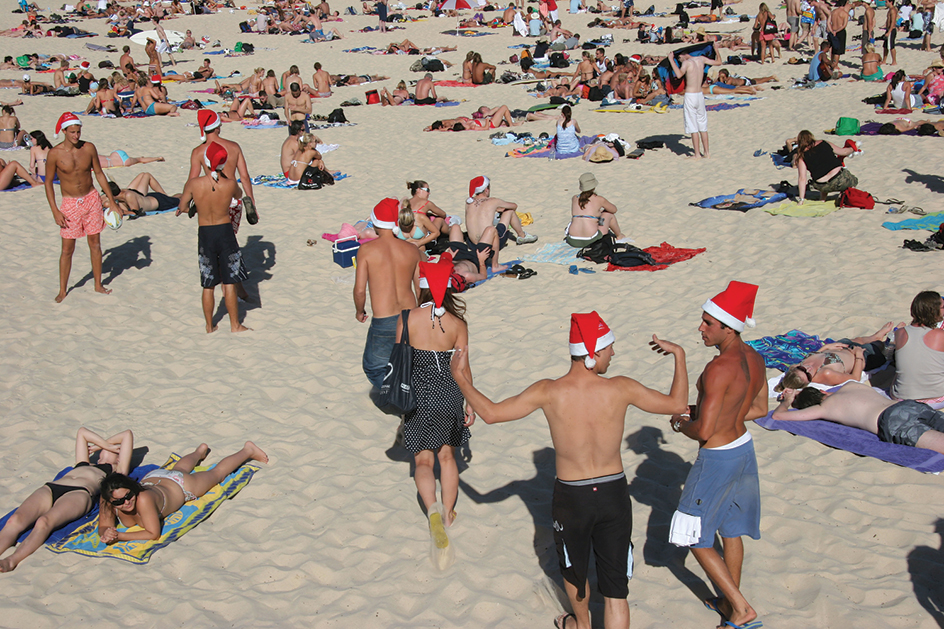Christmas is a Christian feast day that commemorates the Nativity, the birth of Jesus Christ. A feast is a time of celebration. The Nativity feast originated in ancient times and evolved over many years. In the 1800’s, it also became a children’s holiday and the center of a major commercial season. Christmas traditions vary throughout the world. Most Christians observe Christmas on December 25, but the exact date of Jesus’s birth is unknown.
The history of Christmas
In the A.D. 300’s, Christians began celebrating a religious feast based on Bible accounts of Jesus’s birth. In time, both religious and nonreligious traditions developed around the feast. Artwork and music also were created to celebrate the Nativity. Today, the Christmas season is a special time of year for many people throughout the world.
Origins of the Christmas story.
The Christian New Testament contains two accounts of the Nativity, in the Gospels of Matthew and Luke . Both tell that Jesus was born in Bethlehem and that his mother, the Virgin Mary , was married to a carpenter named Joseph .
The Gospel of Matthew records that a new star appeared when Jesus was born, and that astrologers from the East called Magi followed the star to Jesus. Matthew also recounts that the Magi asked Herod , the Roman- appointed ruler of Palestine , for help in finding the child. According to prophecy, the infant would grow up to become “king of the Jews.” The news filled Herod with fear that he would lose his throne. He ordered the slaughter of all baby boys in Bethlehem. Jesus’s family escaped after an angel warned Joseph of the danger in a dream. They fled to Egypt and remained there until Herod died.
The Gospel of Luke says that the angel Gabriel appeared to Mary and told her she would give birth to humanity’s savior. Christians call this event the Annunciation . Luke also tells that after receiving the news, Mary visited her cousin Elizabeth , the future mother of John the Baptist , a famous Jewish prophet. Christians call this meeting the Visitation.
According to Luke, Mary and Joseph traveled from Nazareth , their home, to Bethlehem to register for a Roman census. Jesus was born in Bethlehem in a stable and laid in a manger (feeding trough) because his parents could not find a room at any inn. Angels appeared in the sky and announced the birth of Jesus to some shepherds, saying, “Glory to God in the highest heaven, and on earth peace among those whom he favors!” (Luke 2:14). Later, Mary and Joseph took Jesus to Jerusalem and presented him at the Temple there, according to Jewish law.
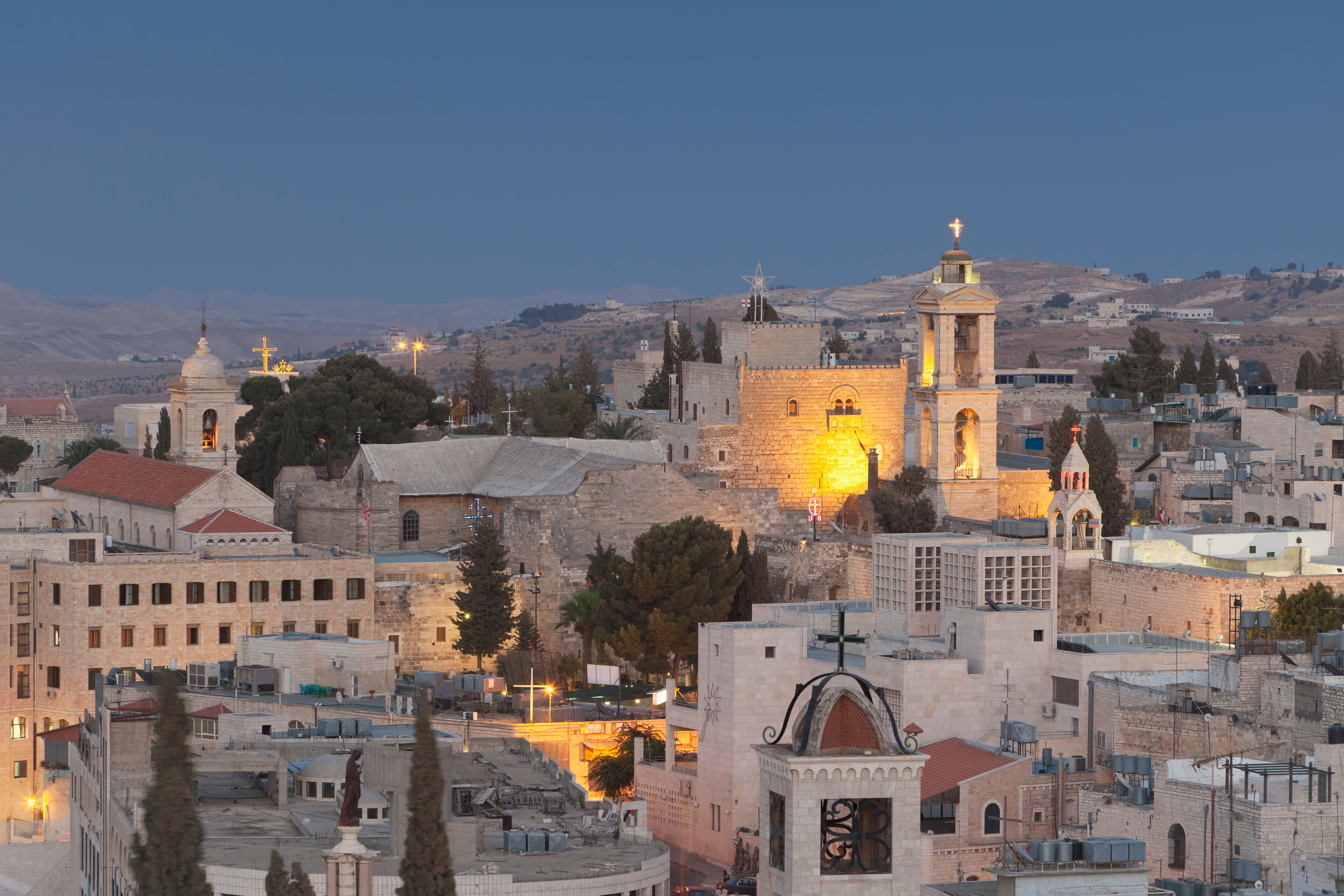
Early Christians also looked outside the Gospels to develop the Nativity story. They began interpreting Old Testament prophecies in relation to Jesus’s birth. For example, the Book of Isaiah says: “The ox knows its owner, and the donkey its master’s crib . . .” (Isaiah 1:3). The “master” became associated with Jesus. As a result, many Nativity scenes include oxen and donkeys.
Early Christians added their own details and interpretations to the Nativity story. For example, Matthew says the Magi followed a star to Jesus. Christians in the 100’s added that it was an extremely large star and the brightest one in the sky. Some Christians came to believe that the Magi in Matthew were three kings. This tradition began in North Africa in about the 200’s. The theologian Origen asserted that there were three Magi, partly because of a prophecy and partly because Matthew says they brought three gifts— gold , frankincense and myrrh . A theologian studies God and religion. Frankincense and myrrh are materials used in perfumes. Later Christians believed that the Magi represented various peoples of the world, so they portrayed them as an African, a European, and a Middle Easterner.
A new religious feast.
Like Jesus, the first Christians lived in Judea , part of the Roman Empire . The empire was huge, extending from Syria to Britain (now the United Kingdom) and surrounding the Mediterranean Sea. Early Christians took their new faith into much of the empire, where Christianity developed in many ways. Such developments included the establishment of new religious feasts.
In the middle A.D. 200’s, Christians began to consider establishing a feast to honor the Nativity. But the Bible did not provide a date for Jesus’s birth. Many people honored Jesus as the “light of the world” and compared him to the shining sun. A North African named Sextus Julius Africanus suggested the winter solstice , the shortest day of the year, for the date of the Nativity feast. After the solstice, the daylight hours grow longer, recalling how Jesus’s birth enlightened the world. On the Julian calendar used by the ancient Romans, the winter solstice fell on December 25.
December 25 was not the only date considered for the Nativity feast, but it became popular, especially in Rome. Pagan (non-Christian) Romans had two major feast days that occurred at the winter solstice. Christian leaders realized that a Nativity feast on December 25 would challenge the attraction of these pagan feasts. By 336, Christians in Rome had begun celebrating the feast of the Nativity on December 25. However, not all Christians chose December 25. For example, Armenian Chris tians chose January 6. By the early 400’s, most Christians had accepted December 25 as the feast date.
In 1582, the Roman Catholic Church adopted the Gregorian calendar , which most people use today. However, some Eastern churches continue to observe religious feasts according to the Julian calendar. For example, Russian Orthodox believers observe Christmas on January 7, which corresponds with December 25 on the Julian calendar.
Since ancient times, Christians also have observed Epiphany . This feast commemorates the adoration of Jesus by the Magi or, in Eastern churches, his baptism. Most Christians observe Epiphany on January 6. The Twelve Days of Christmas are the twelve days from December 25 through January 5, the day before Epiphany. 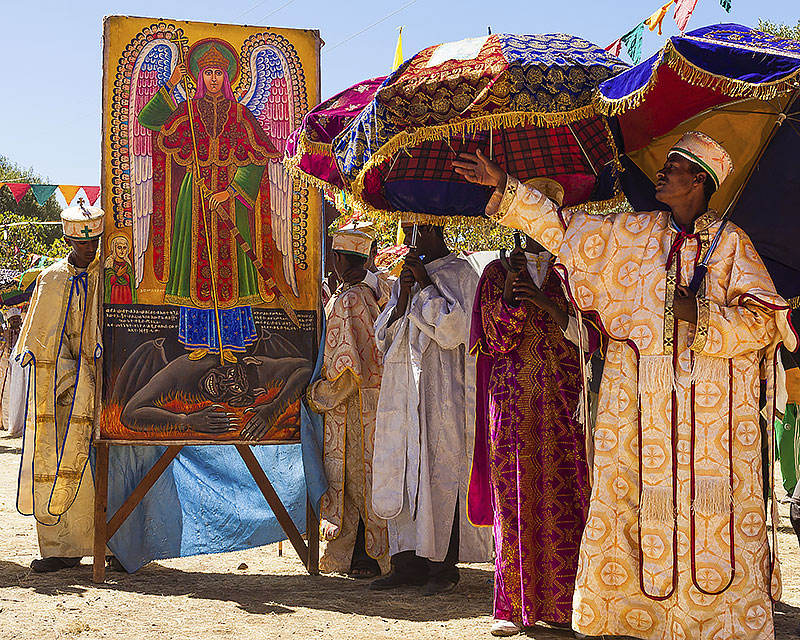
Christmas soon became an extremely important feast day, like Easter . Easter followed a preparatory period called Lent , and Christians decided that Christmas should follow a similar period. By the end of the 500’s, they had established Advent , a period of four weeks during which to prepare spiritually for Jesus’s birth.
Developing Christmas traditions.
Some Christmas traditions were added based on non-Christian customs. The early Christians worked to convert pagans to their own faith. While doing so, they adopted some of the pagans’ customs that did not conflict with their own beliefs. For example, one pagan holiday in late December involved the giving of gifts, usually small ones. Early Christians adopted this practice. Today, friends and relatives give one another gifts at Christmastime. In many countries, Santa Claus or another similar figure brings presents to children during the Christmas season. 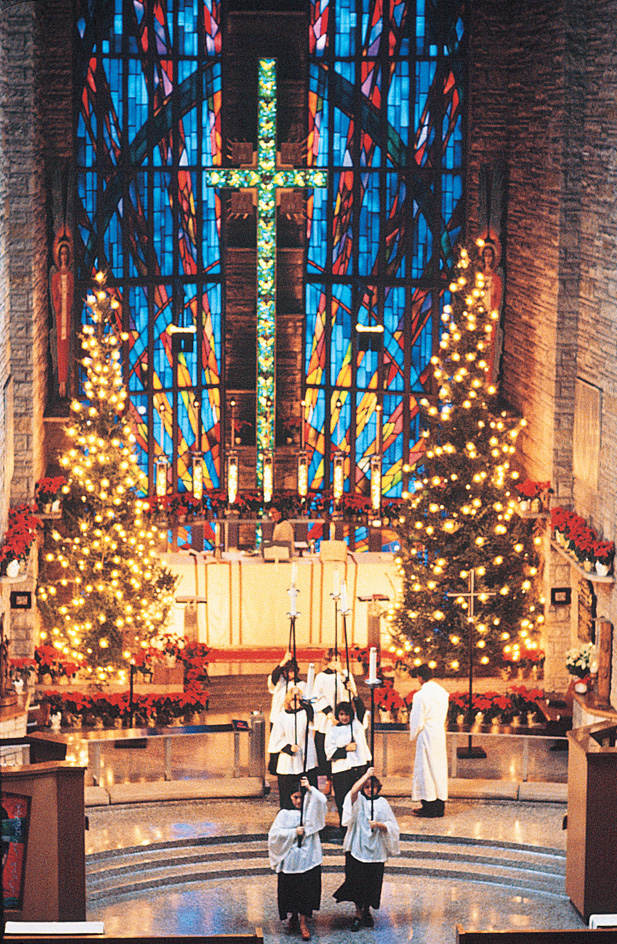
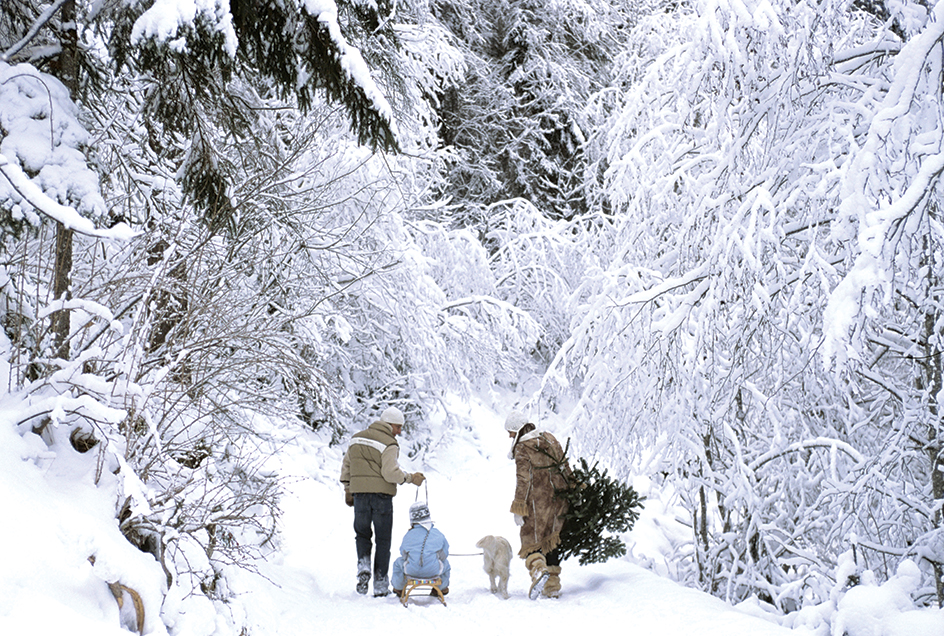
The custom of decorating with greenery at Christmastime was also based on non-Christian practices. Roman pagans used to decorate the insides of their homes with greens in December. In addition, northern European pagans celebrated a harvest festival called Yule . They decorated their homes with evergreen trees, which symbolized life in the midst of the cold northern winter. They also burned a Yule log, part of a large tree that they cut down. Eventually, Christians began putting up Christmas trees. Today, some form of Christmas tree is part of many Christmas celebrations. Decorations include such things as bright ornaments, tinsel, and candy canes. Many Christmas trees have a star ornament at the top, to represent the star that led the Magi to Jesus.
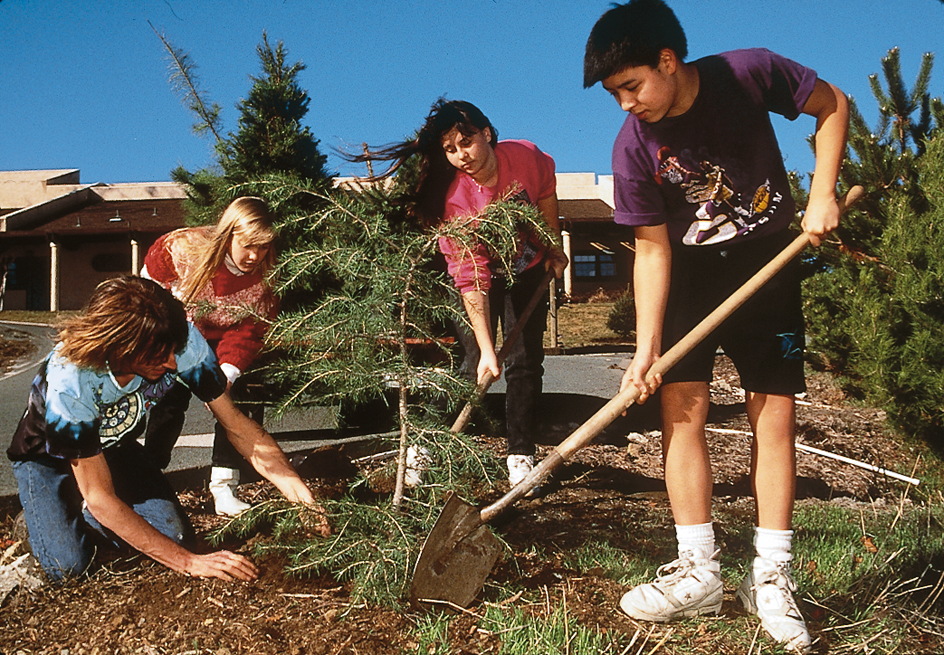
Early European peoples used mistletoe , an evergreen plant with white berries, as a ceremonial plant. In time, people began using it as a Christmas decoration. In many countries today, tradition says that a person caught standing beneath mistletoe must forfeit a kiss.
The modern English word Christmas that is used today came from the early English term Cristes maesse, meaning Mass of Christ. In the Middle Ages (the 400’s through the 1400’s) in England, the Nativity feast included a midnight Mass (religious service) on Christmas Eve. The Gospel reading for this Mass was about Jesus Christ’s birth. By about 1050, the English called this Mass Cristes maesse.
The first Christians were from Jewish communities, and Jewish artwork did not include images of people. Christian artwork initially followed the Jewish example. But as Christianity spread among Greeks and Romans, Christian artwork changed. By the 300’s, Christian artists were creating Nativity scenes with human figures. Many artistic representations of the Nativity have been created since that time.
The earliest Christian music also followed Jewish tradition. Jewish music consisted of plainsong or chant—that is, singing or chanting with no instrumental accompaniment. Christians began creating plainsong for the Nativity feast in the 300’s. One of the best-known Christmas chants—”Veni, Veni, Emmanuel” (“O Come, O Come, Emmanuel”)—dates from the 1200’s.
Saint Nicholas.
In the 300’s in Myra, a city in Roman Asia Minor (now Turkey), there lived a bishop named Nicholas. He gained a reputation as a kindly man who helped people in desperate situations, especially children. Nicholas came to be honored as a saint. After he died, the people of Myra believed he continued to help them. For example, they thought he calmed storms at sea. The body of legends about Nicholas grew. It included some stories about his helping and saving children. Nicholas’s reputation spread throughout the Christian world, and people began observing his feast day on December 6, his supposed death date. 
One of the ways in which Saint Nicholas was said to help children was by bringing them gifts. No later than 1500, children were putting out their stockings so that he could fill them with gifts on December 6. Later, in the United States , Saint Nicholas became Santa Claus . By 1850, Santa Claus had become a major part of American Christmas celebrations. In the 1930’s, advertisements by the Coca-Cola Company helped popularize the image of Santa as a large, jolly man in a red suit with white fur trim, a wide black belt, and black boots. In some places, a different figure brings children gifts. In Italy, for example, an old woman named La Befana brings the gifts. In the United Kingdom , Father Christmas does so.
The Reformation and Christmas.
A religious movement called the Reformation occurred in the 1500’s. Christians who disagreed with certain practices of the Roman Catholic Church established churches of their own. These churches became known as Protestant churches. Most of them continued to celebrate Christmas.
The Church of England became the dominant church in England. Some people believed the Church of England had strayed from the New Testament ideals of the Christian church. These people, called Puritans , wanted to “purify” the Church of England. They tried to eliminate some practices of the church, including the celebration of Christmas, which they saw as rooted in pagan festivals. After the Puritans gained control of England’s government in 1649, they outlawed Christmas. Some clergy were jailed for celebrating the feast. Puritans in England’s North American colonies of Plymouth and Massachusetts Bay also outlawed Christmas there. The Puritans lost political power in England by 1660. The English monarchy then restored the celebration of Christmas.
Classical music and carols.
In the late 1600’s and the 1700’s, many great composers wrote classical music for Christmas. Such composers included the Italians Arcangelo Corelli and Antonio Vivaldi and the Germans Johann Sebastian Bach and George Frideric Handel . The “Hallelujah” chorus from Handel’s vocal composition Messiah has become one of the most popular pieces of Christmas music ever written.
Loading the player...Christmas Oratorio by Johann Sebastian Bach
The 1700’s also saw the creation or publication of several famous Christmas carols (festive songs). Such carols include “God Rest Ye Merry, Gentlemen,” “The First Noel,” and “Hark! The Herald Angels Sing.” Well-loved carols written in the 1800’s include “Silent Night,” “We Three Kings,” “O Holy Night,” and “O Little Town of Bethlehem.” Today, group caroling is a popular Christmas tradition in many places. 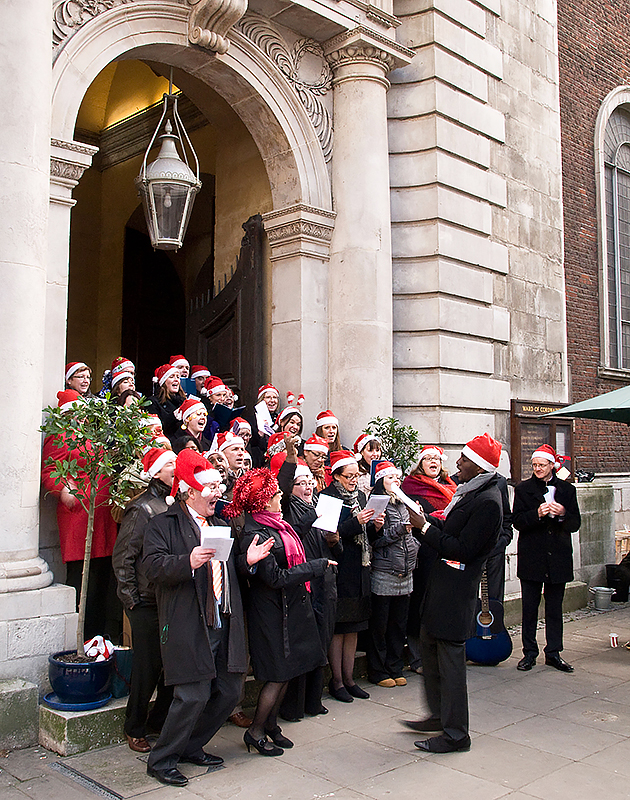
Literary influences.
Three writers of the 1800’s had an enormous influence on modern Christmas traditions— Washington Irving , Clement Clarke Moore , and Charles Dickens .
In Bracebridge Hall (1822), the American author Washington Irving describes Christmas at a fictional English manor. He briefly mentions the book’s characters attending church. But his emphasis is on the family coming together and celebrating with a large, wonderful Christmas dinner. Before Irving published Bracebridge Hall, Christmas was a mostly adult holiday, often celebrated by drinking much liquor. Irving’s writing played a great role in making Christmas a family holiday.
The American scholar Clement Clarke Moore is credited with writing the poem “An Account of a Visit from St. Nicholas” (1823) for his children. Today, the poem is better known by its first line, “Twas the Night Before Christmas.” In the poem, Saint Nicholas visits the narrator’s home on December 24. He arrives in a sleigh pulled by eight reindeer. He parks his sleigh on the roof and comes down the chimney to fill the family’s stockings with gifts. Moore’s poem became immensely popular. It played a large role in moving gift-giving in the United States from December 6, Saint Nicholas’s feast day, to December 24, Christmas Eve. It also helped make Christmas a children’s holiday. Particular details of the poem, such as the names of the reindeer, became established in Christmas tradition. Later authors placed Santa’s home at the North Pole and added a “Mrs. Claus.”
In 1843, the English author Charles Dickens wrote and published the story “ A Christmas Carol .” It became the most famous Christmas story in English literature. It describes the transformation on Christmas Eve of Ebenezer Scrooge, a cold-hearted miser, into a more generous man. Dickens grew up poor and had a great concern for people on the edges of society. “A Christmas Carol” helped many people see the importance of charity at Christmastime.
Other developments.
The custom of sending greeting cards at Christmastime originated in the 1840’s in the United Kingdom, then spread to the United States. In the 1800’s, many people in both nations had left rural areas to work in cities. Christmas was not a work holiday, so they did not have time to travel home to celebrate it with their families. Instead, they sent their loved ones greeting cards. Since that time, greeting cards have been an essential part of celebrating Christmas. Today, people can send printed cards or e-cards (electronic cards).
The popularity of Christmas trees also spread in the 1840’s. Germans had put up Christmas trees since the 1500’s. In the 1840’s, German immigrants to the United States introduced Christmas trees to many Americans. In the United Kingdom, Prince Albert , a German nobleman who married Queen Victoria , helped popularize Christmas trees. An 1848 edition of The Illustrated London News showed Victoria and Albert’s family gathered around a tree. The British people quickly began to imitate the royal family.
In 1870, U.S. President Ulysses S. Grant proclaimed Christmas a national holiday. By doing so, he officially acknowledged the feast’s immense popularity.
By 1850, Christmas had become a subject of theater productions. Such productions have remained popular. For example, The Nutcracker ballet, first performed in Russia in 1892, remains a tradition during the Christmas season. In the 1900’s, Christmas became a popular subject for motion pictures, including such classics as It’s a Wonderful Life (1946) and Miracle on 34th Street (1947). More recent popular Christmas movies have included A Christmas Story (1983) and Home Alone (1990). Today, many television channels air special Christmas programs and “made for TV” movies.
Charity also has become an important part of the Christmas season. Many people feel a desire to share their good fortune with those who cannot afford Christmas gifts or a large holiday meal. Such charitable organizations as the Salvation Army have special Christmas collections for the poor. Churches, schools, and businesses organize food and gift drives. Some people volunteer to serve Christmas dinner at a homeless shelter rather than host their own holiday dinner.
Christmas around the world
Christmas traditions vary throughout the world. People in different places share some Christmas customs. For example, many people attend church services, exchange gifts, put up decorations, and share a special meal. Some customs are unique to a particular group or region. The following section highlights just some of the many ways people around the world celebrate Christmas. In addition, some World Book articles about individual countries have information about Christmas practices in those nations.
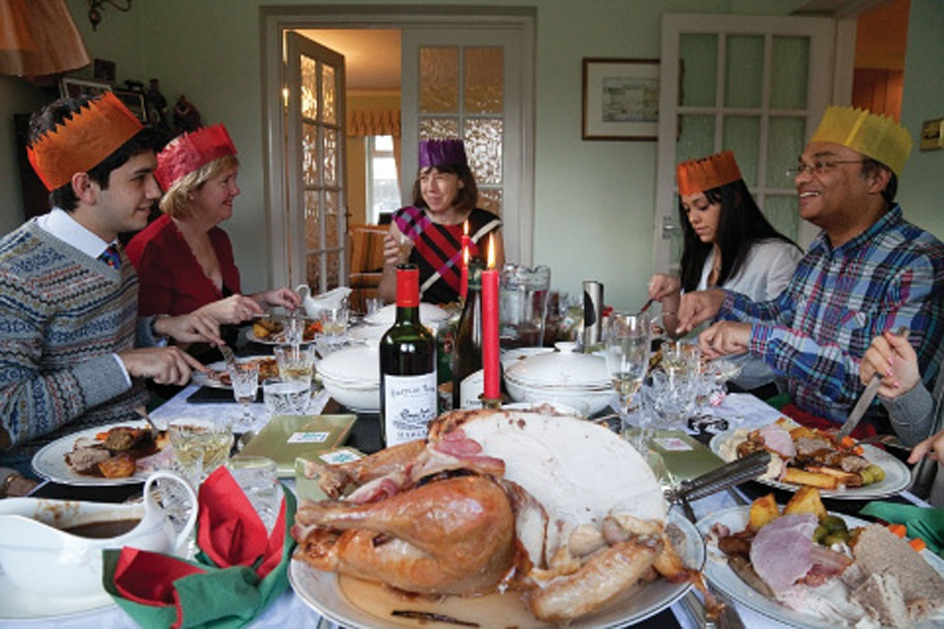
Europe
has long been a predominantly Christian region. Many different Christmas traditions have developed there. Some of these traditions, especially those of Germany and the United Kingdom, have spread to other parts of the world, including North America.
Germany is known for its unique Christmas markets. At Christmastime, German town squares fill with booths and shops selling a wide selection of holiday foods and handmade gifts. Children in southern Germany look for ward to receiving gifts from the Christkind (Christ child) on Christmas Eve. In northern Germany, they believe the Weihnachtsmann (Christmas man) brings the gifts. 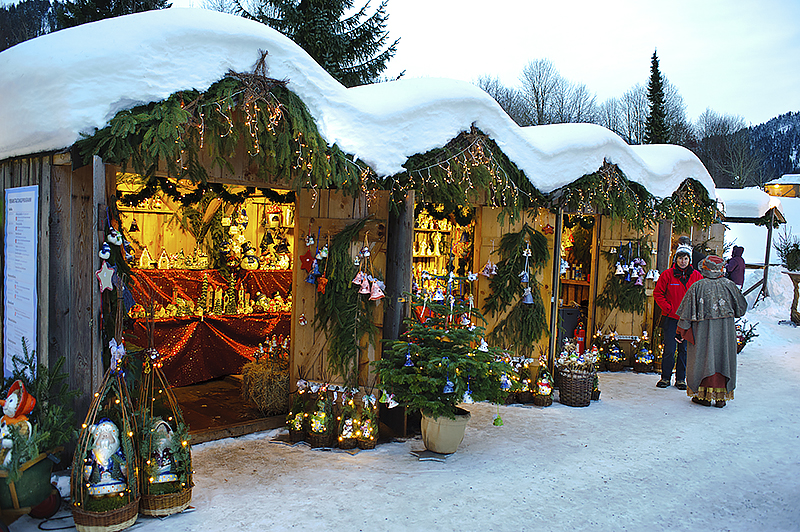
Germans helped popularize the practice of decorating Christmas trees. They also introduced such famous Christmas carols as “Lo, How E’er a Rose Is Blooming” and “Silent Night.” The first known Advent wreaths and Advent calendars date from the 1800’s in Germany. An Advent wreath has four candles representing the four Sundays in Advent. One additional candle is lit each Sunday until Christmas. An Advent calendar marks the days in December until Christmas. Each date is printed on a flap. One flap is lifted daily to uncover a surprise, such as a holiday picture or a chocolate.
In the United Kingdom, children look forward to receiving gifts from Father Christmas. Popular Christmas foods and beverages include plum pudding and wassail, an alcoholic punch that dates from the Middle Ages. Like the Germans, the British also have given the world some beautiful Christmas carols, including “Joy to the World” and “God Rest Ye Merry, Gentlemen.” On December 26, the British celebrate Boxing Day . On that day, people traditionally give money and other gifts to charitable institutions, needy individuals, and people in service jobs. 
In Ireland , a popular tradition says that every Christmas Eve, Mary and Joseph wander through towns looking for a place to stay. On that night, Irish families put candles in their windows to show the Holy Family that they are welcome. Many Irish people immigrated to the United States in the 1800’s, bringing their Christmas traditions with them. Today, many Americans put lights in their windows at Christmastime.
In France , children receive gifts from Saint Nicholas on St. Nicholas Day (December 6). They receive more gifts from Père Noël (Father Christmas) on Christmas Eve. Among French Christmas foods, the most famous is the bouche de Noël, a rich chocolate cake shaped like a Yule log. 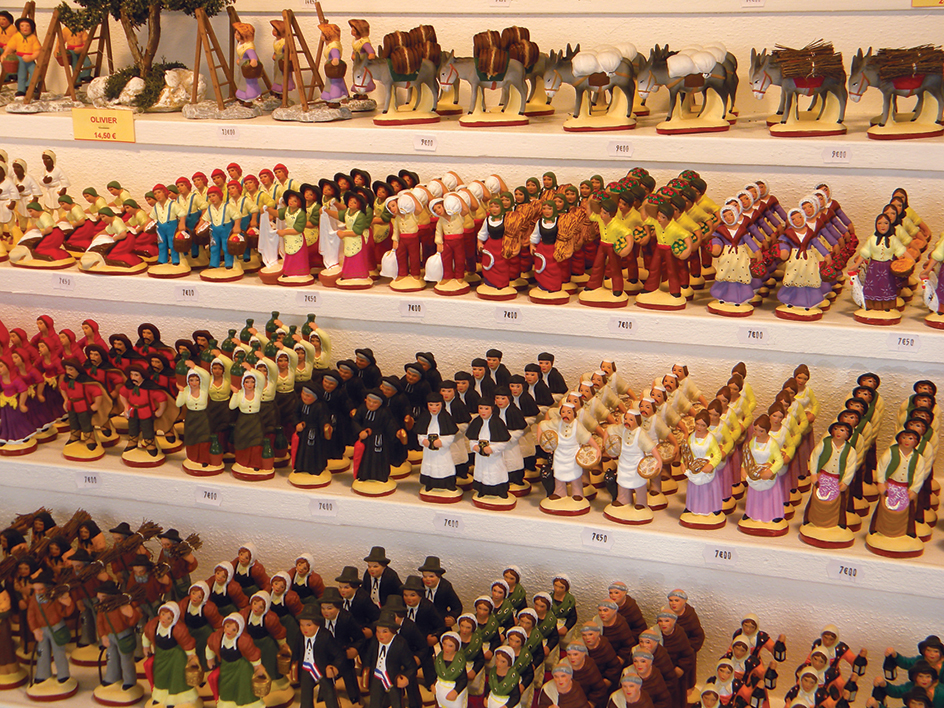
In Italy , La Befana leaves children gifts. Legend tells that the Three Kings invited La Befana to visit Jesus with them. She declined, saying she had too much housework to do. But she later regretted her decision. She followed the Three Kings but did not catch up with them. Every year on January 6, she flies through the sky on a broomstick. She stops in homes to leave children gifts as she searches for the baby Jesus.
The Italian friar Francis of Assisi helped popularize the practice of setting up a crèche (Nativity scene) at Christmastime. In 1223, Francis constructed a crèche that included live animals. Italian artists, especially in Naples, have created beautiful Christmas figurines for centuries.
In Russia , Russian Orthodox Christians celebrate Christmas on January 7. Children receive gifts from Ded Moroz (Grandfather Frost) on New Year’s Eve, December 31.
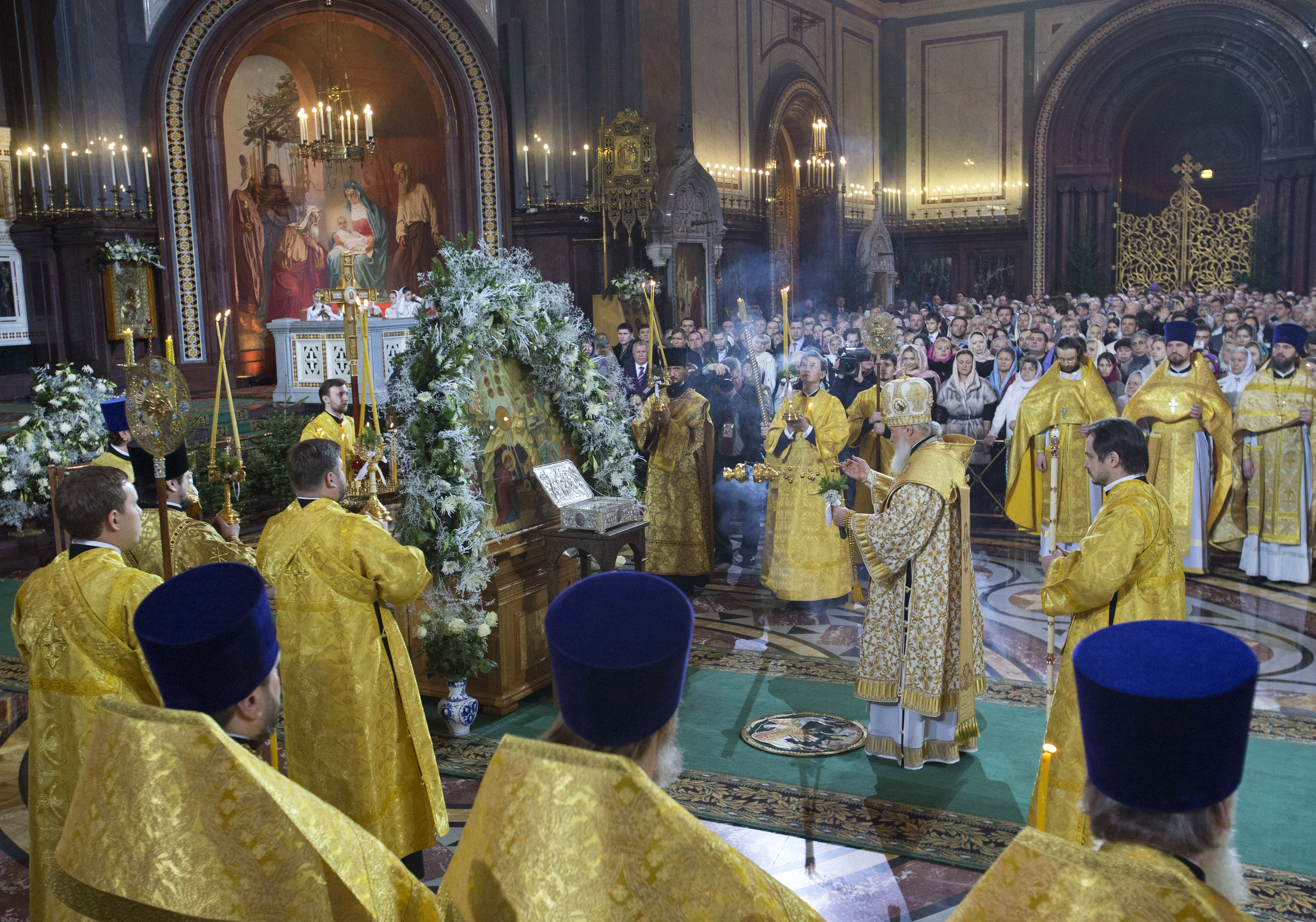
In Eastern Europe, Christmas celebrations have been mainly religious, with the observance of folk customs. In Slovakia , the Christmas season begins with Advent. On December 5, Svaty Mikuláš (Saint Nicholas) brings children gifts. On Christmas Day, children receive gifts from the baby Jesus. Christmas trees decorated with handmade ornaments and food treats remain up until January 6 (Epiphany). In Moravia , a region of the Czech Republic , a type of Christmas scene called a putz is popular. It is a miniature village decorated for Christmas.
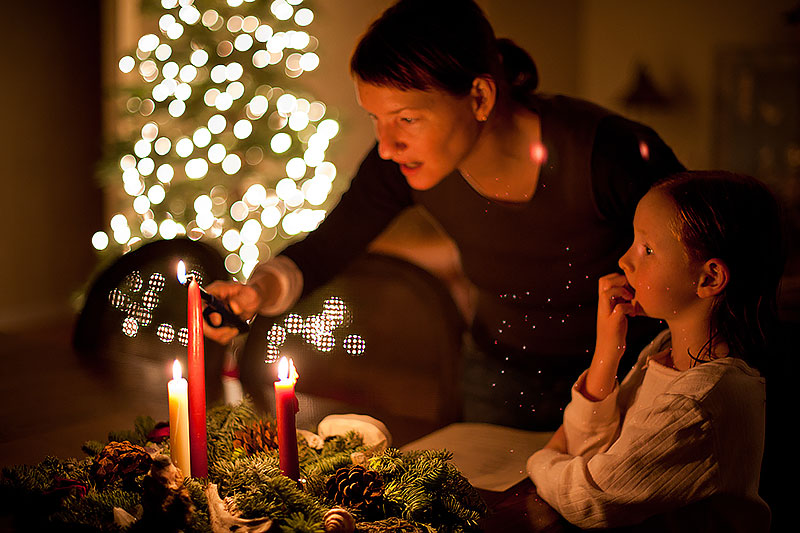
In Poland , Advent ends when children spot the first star to appear on Christmas Eve. Poles call this star the Star of Bethlehem. Family and friends then eat a large meal. Many families follow the tradition of breaking an oplatek, a wafer made of flour and water and resembling a Communion wafer. The head of the family breaks the oplatek and asks God for peace among those present. Each person breaks off and eats a small piece of the oplatek. Also on Christmas Eve, in some areas of Poland the Star Man brings gifts to children. In other areas, the baby Jesus or an angel is the gift giver.
The Americas.
A majority of North and South Americans are Christians, and so Christmas is an important feast throughout the Western Hemisphere. Christmas traditions in North America reflect a strong influence from Germany and England.
In the United States and Canada,
people decorate their homes with Christmas trees, evergreen wreaths, and Nativity scenes. They place presents for one another under the tree. City streets sparkle with outdoor lights and other decorations. Many people send greeting cards to relatives and friends who live far away. In some places, groups of carolers walk from house to house singing Christmas songs. Listeners may give them money or small gifts or invite them in for a warm drink.
Children look forward to Santa Claus bringing them presents on Christmas Eve. They also may hang up stockings for Santa to fill with small treats. Stores hire people to dress up as Santa and visit with young people.
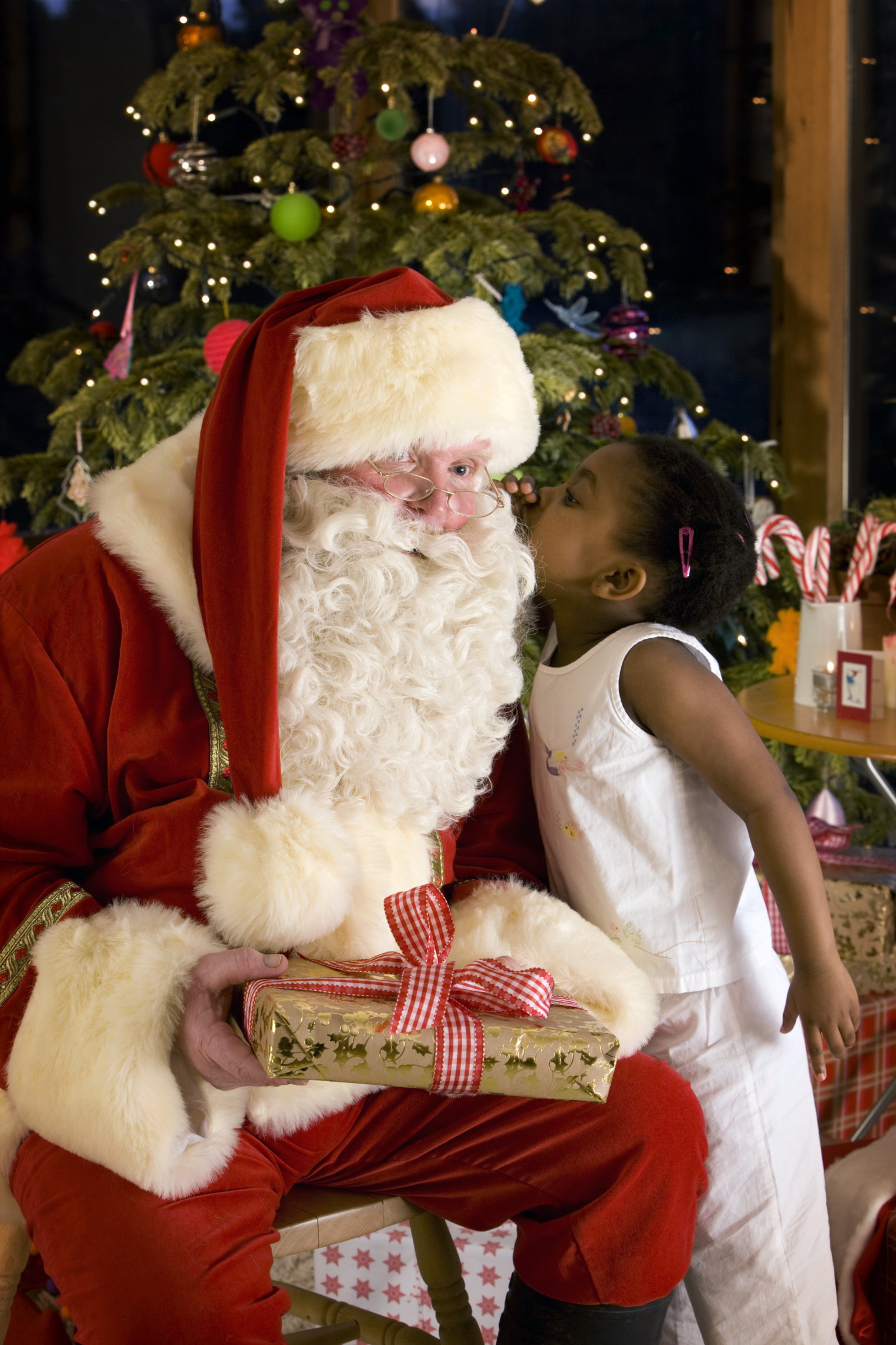
Many people attend church services on Christmas Eve or Christmas Day. Later, they share a special meal with family and friends. A traditional Christmas dinner may include roast turkey, stuffing, cranberry sauce, and other dishes. Some people have ham or roast goose. In Canada’s Atlantic province of Nova Scotia , people eat lobster as a main dish. Popular desserts include mince or pumpkin pie and fruitcake. Eggnog is a popular Christmas drink.
Various ethnic groups observe their ancestors’ Christmas customs. For example, Spanish traditions are popular in the U.S. Southwest. Many people in Canada’s Quebec province follow French customs. Some black Americans combine Christmas with Kwanzaa , an African American holiday lasting from December 26 through January 1. 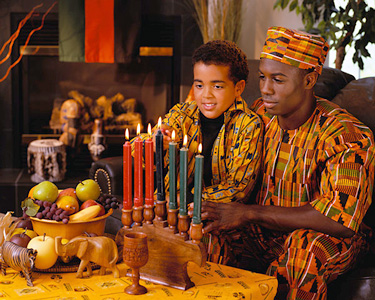
Latin America.
In Mexico , people usually put up Christmas decorations on December 16. This date marks the beginning of the nine-day Las Posadas festival. The word posada means inn. During the festival, people reenact Mary and Joseph’s search for lodgings on the first Christmas Eve. Mexicans set up Nativity scenes on December 16, but they do not put the figure of Jesus in the manger until December 24. Also on Christmas Eve, they attend Mass and eat a large dinner. Children receive presents from the Three Kings on January 6, Día de los Reyes (Day of the Kings, also called Three Kings Day). This tradition commemorates the Magi giving gifts to Jesus. 
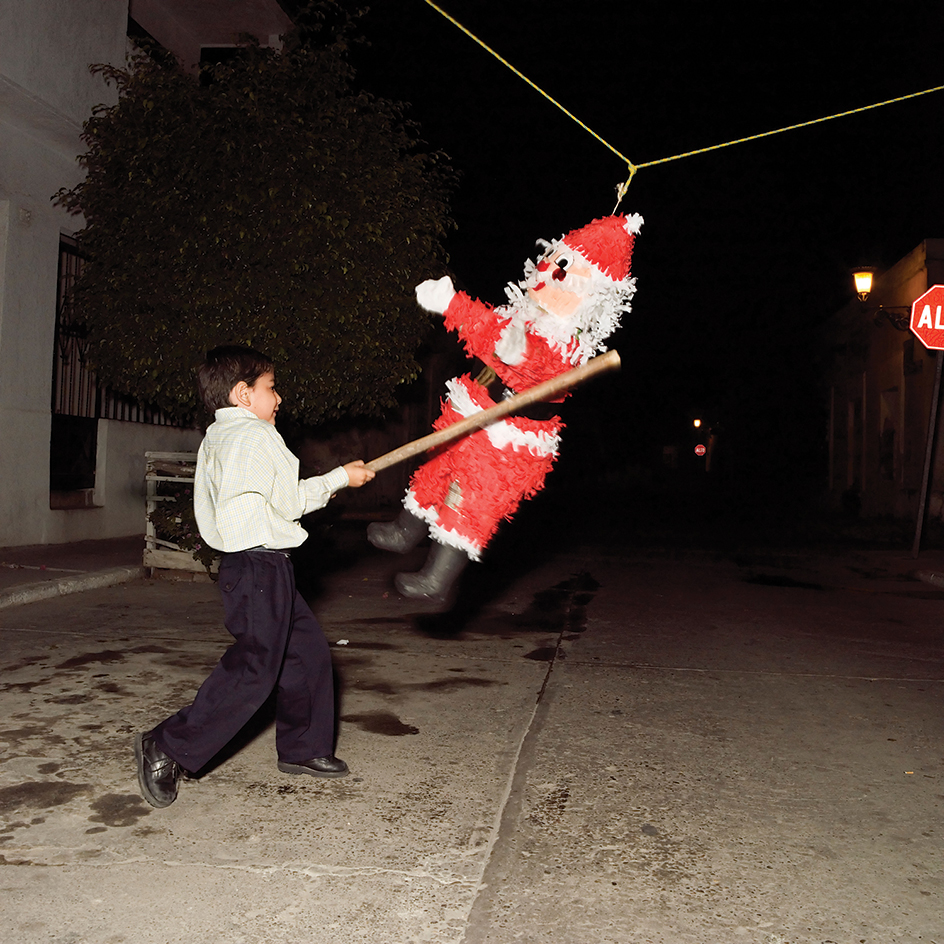
Mexico has made some significant contributions to Christmas celebrations in other places. In the early 1500’s, Spaniards exported turkeys from Mexico to Europe, where they became popular for Christmas dinner. In 1825, Joel Poinsett, the U.S. ambassador to Mexico, noticed a plant with red, petal-like flowers in Mexico. He sent a sample of the plant to South Carolina, where it flourished. The plant was named poinsettia in honor of the ambassador. Since then, poinsettias have become popular Christmas decorations.
In Brazil , many Christmas traditions come from Portugal , which ruled Brazil from the 1400’s to the 1800’s. Such European customs include setting up a praesépio (Nativity scene) and putting up a Christmas tree. Traditionally, Brazilian children have received gifts from the Magi on January 6, Three Kings Day. Since the 1950’s, Santa Claus, called Papai Noel, also has been part of Christmas celebrations. He brings children gifts on Christmas Eve. Brazilians eat a large dinner on the evening of December 24, then attend midnight Mass. Because December is so warm in Brazil, some people spend Christmas at the beach.
Africa
has millions of Christians. In Egypt , a predominantly Muslim country, a few million people belong to the Coptic Orthodox Church. The Copts have celebrated the Nativity since the 300’s. For them, Christmas is primarily a religious festival observed on January 7. Coptic Christmas celebrations focus mainly on the birth of Jesus. However, they also include the flight of Jesus’s family to Egypt and their residence there for a time. Some Coptic Christmas traditions center on the places the Holy Family visited in Egypt.
Many people in Ethiopia belong to the Ethiopian Orthodox Church, which is related to the Coptic Orthodox Church. Like the Copts, Ethiopian Orthodox Christians observe Christmas on January 7. Before Christmas, they fast (go without food) for 40 days, then break the fast with a Christmas Eve feast. Local churches in Ethiopia sponsor Christmas celebrations that last for days.
Asia.
A minority of Asians are Christian. But Christmas is popular in a number of Asian countries, where Christmas traditions reflect the influence of American culture. In the Philippines , unique for its majority Christian population, the Christmas season begins on December 16. People attend Mass every day for nine days before Christmas. They decorate their homes with Christmas trees and wreaths, set up Nativity scenes, and sing Christmas carols. They usually eat a special meal on Christmas Eve, when Santa Claus also might visit.
In South Korea , a minority of the people are Christians. However, Christmas is so popular that it is a national holiday. Churches, department stores, and local governments put up numerous outdoor lights. Department stores in such cities as Seoul and Busan usually have elaborate, creative light displays. Santa Claus, called Santa Haraboji (Grandfather Santa) or Santa Kullosu, also makes appearances.
Japan is another Asian nation with a Christian minority that has adopted Western Christmas practices. As in South Korea, outdoor lights are extremely popular at Christmastime. People give one another gifts on Christmas Eve, and children look forward to receiving presents from Santa-san. In Japanese, san is a title of respect. Businesses and schools usually remain open on Christmas Day, so people do not have time to prepare a large meal. Christmas dinner usually is restaurant take-out food. A large, famous Christmas celebration takes place annually at Tokyo Disneyland.
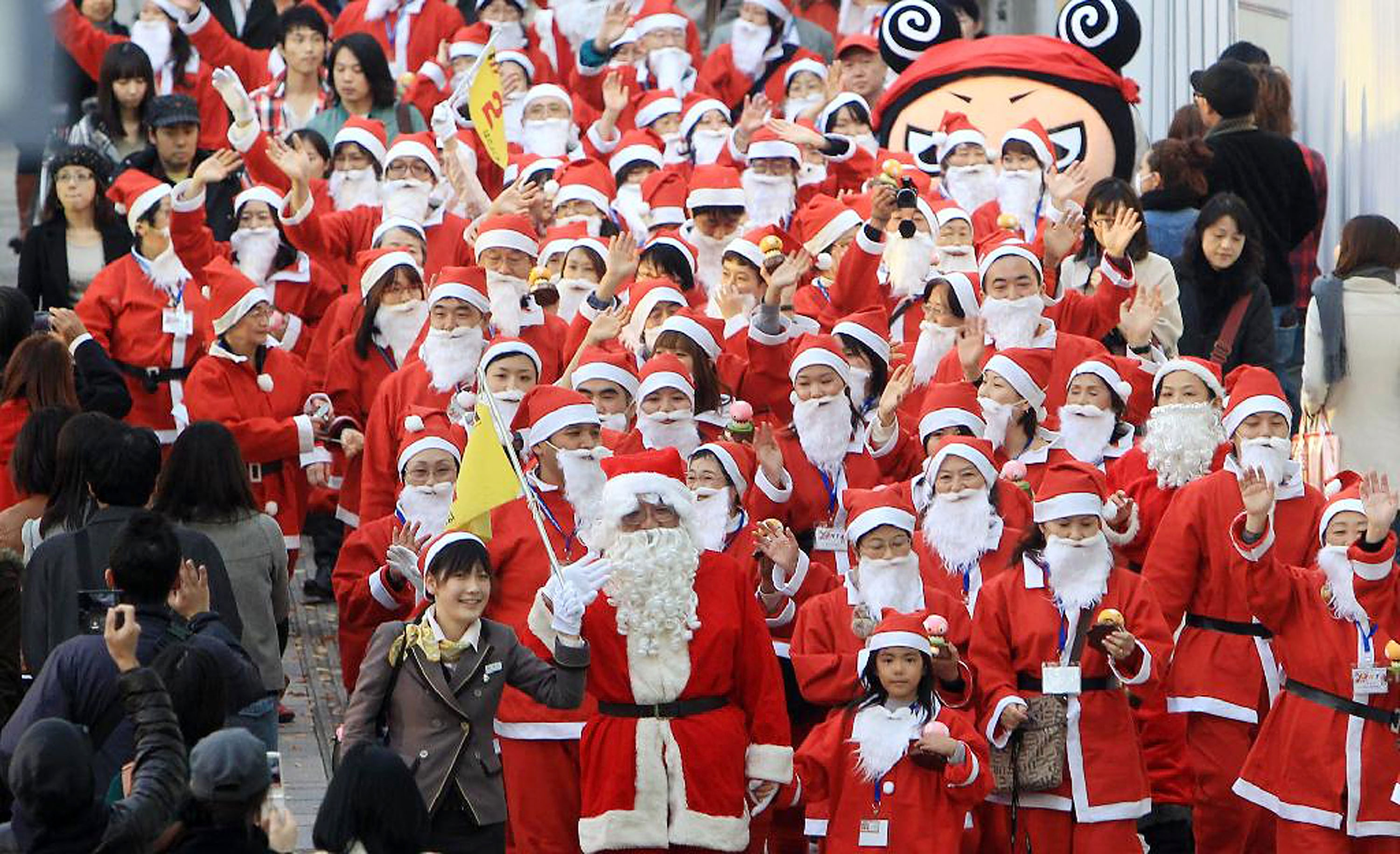
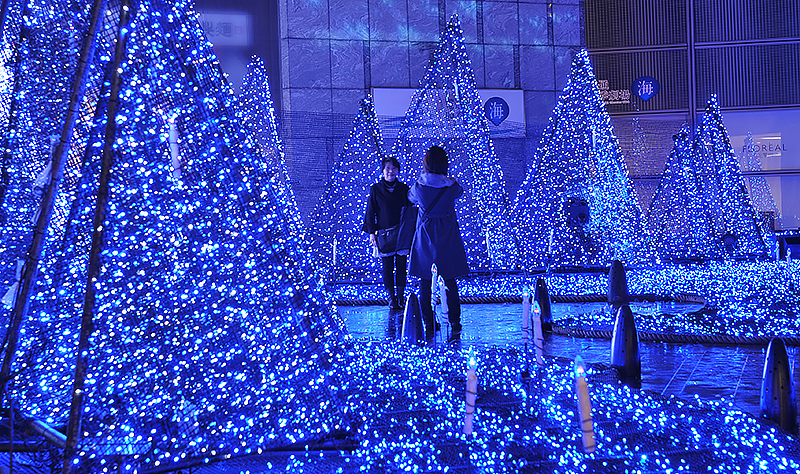
Australia,
a former British colony, mixes British Christmas traditions with its own customs. Australia lies south of the equator, so December is a summer month. Because of the heat, Christmas dinner includes light foods such as fish and shellfish, often barbecued. Australians put up Christmas trees and decorate their homes with cuttings from local shrubs called Christmas bushes. Caroling also is extremely popular. Australian cities sponsor huge caroling events at which famous local singers lead tens of thousands of people in song. Like the British, Australians observe Boxing Day (December 26) as a public holiday. 